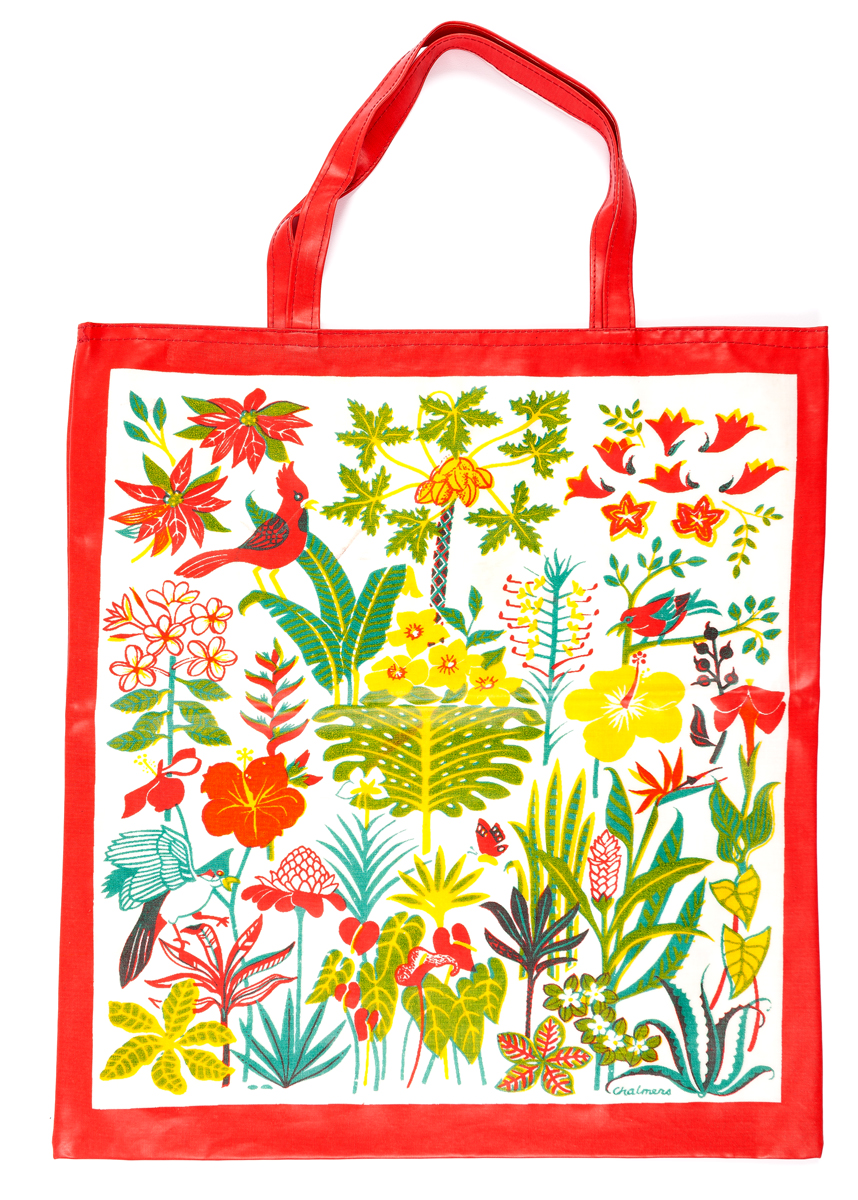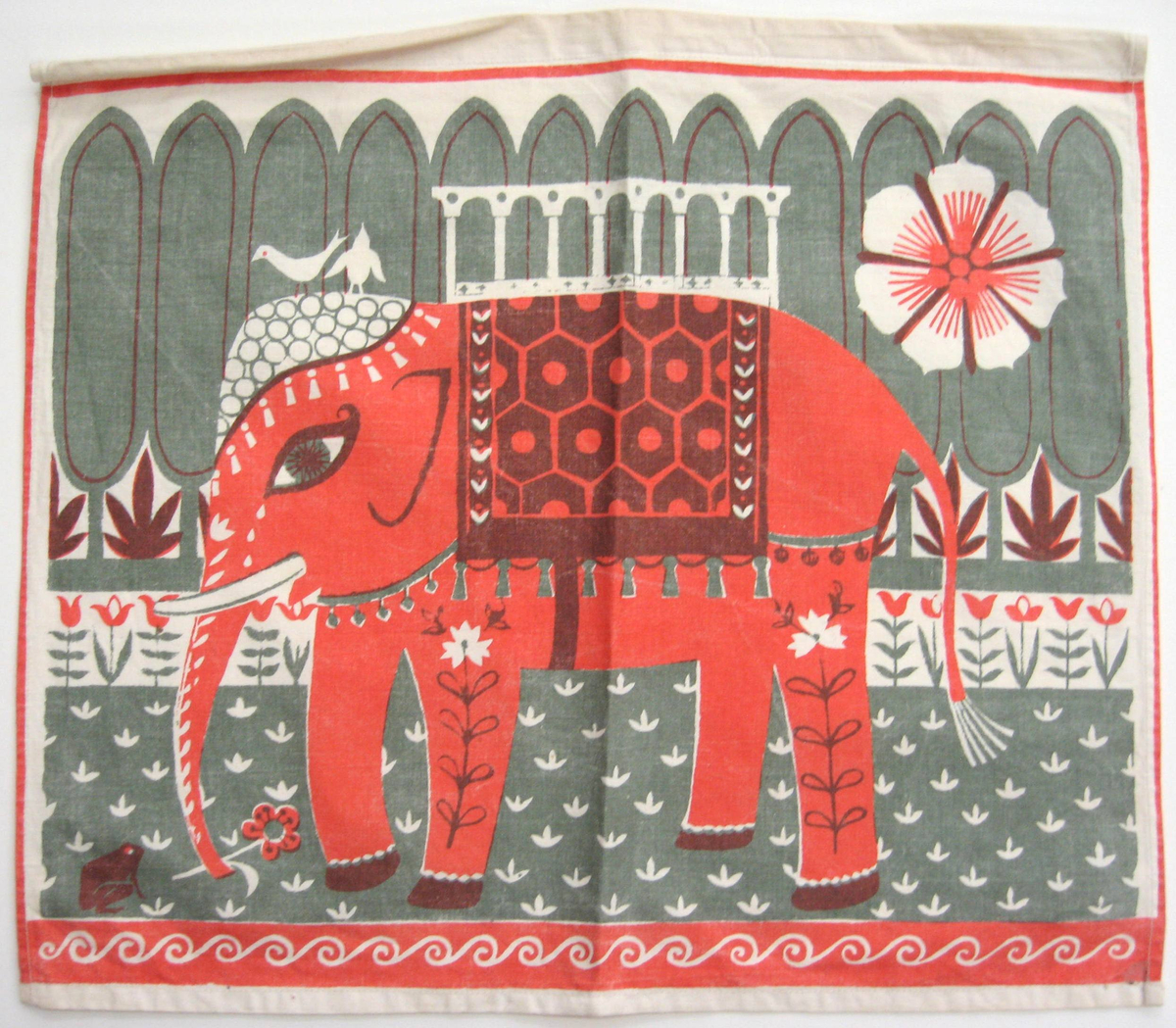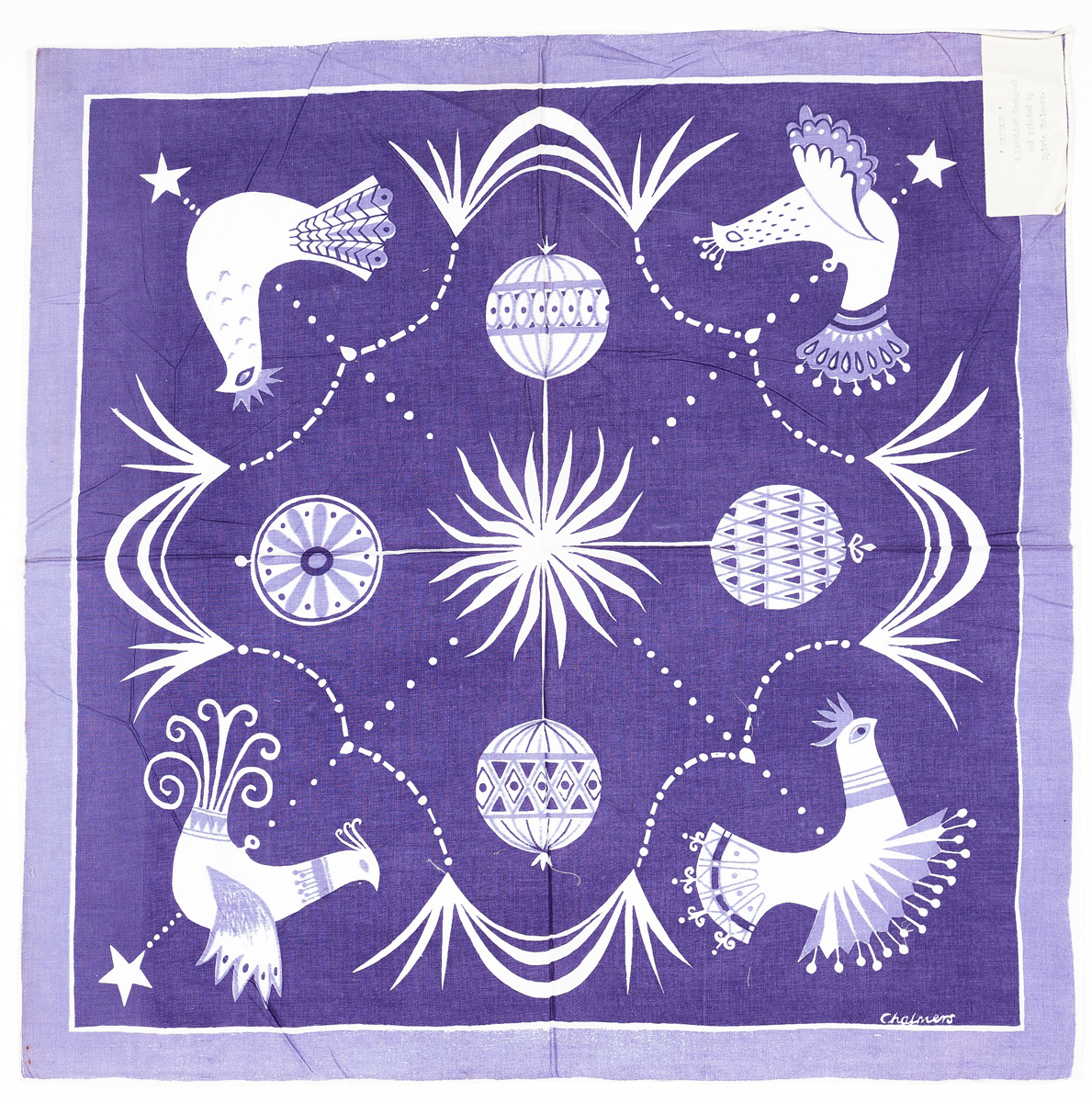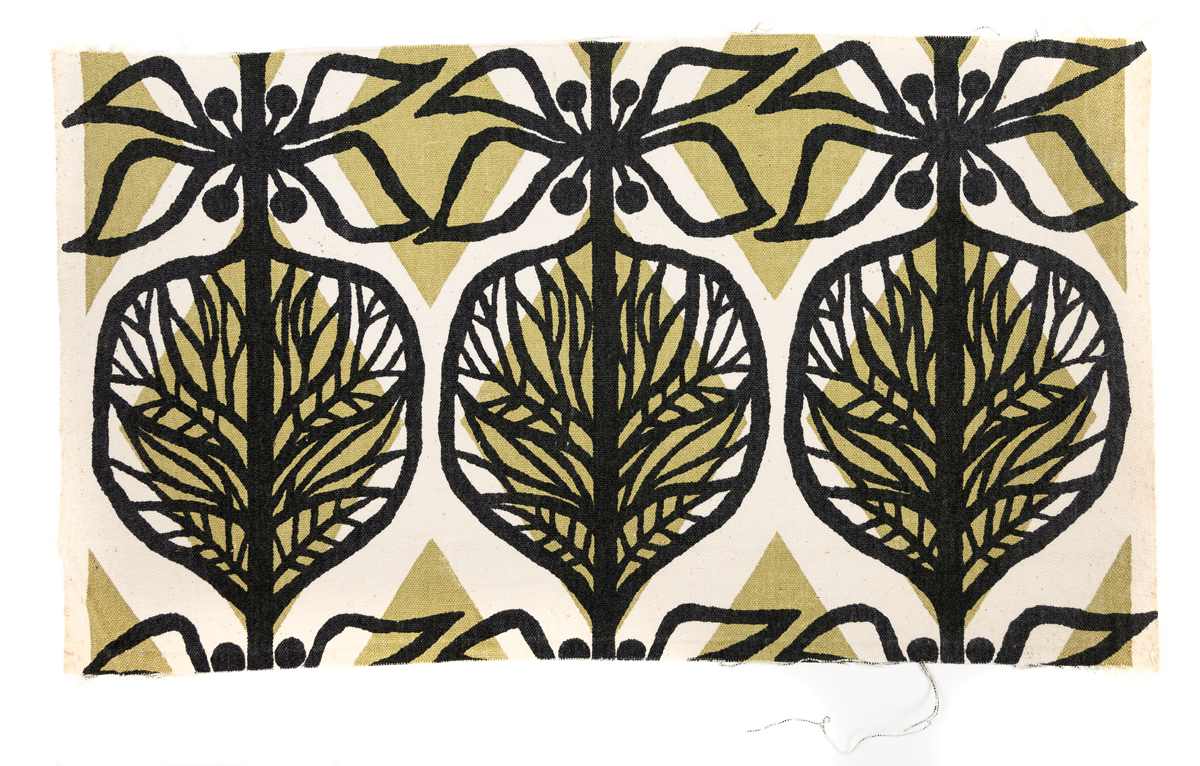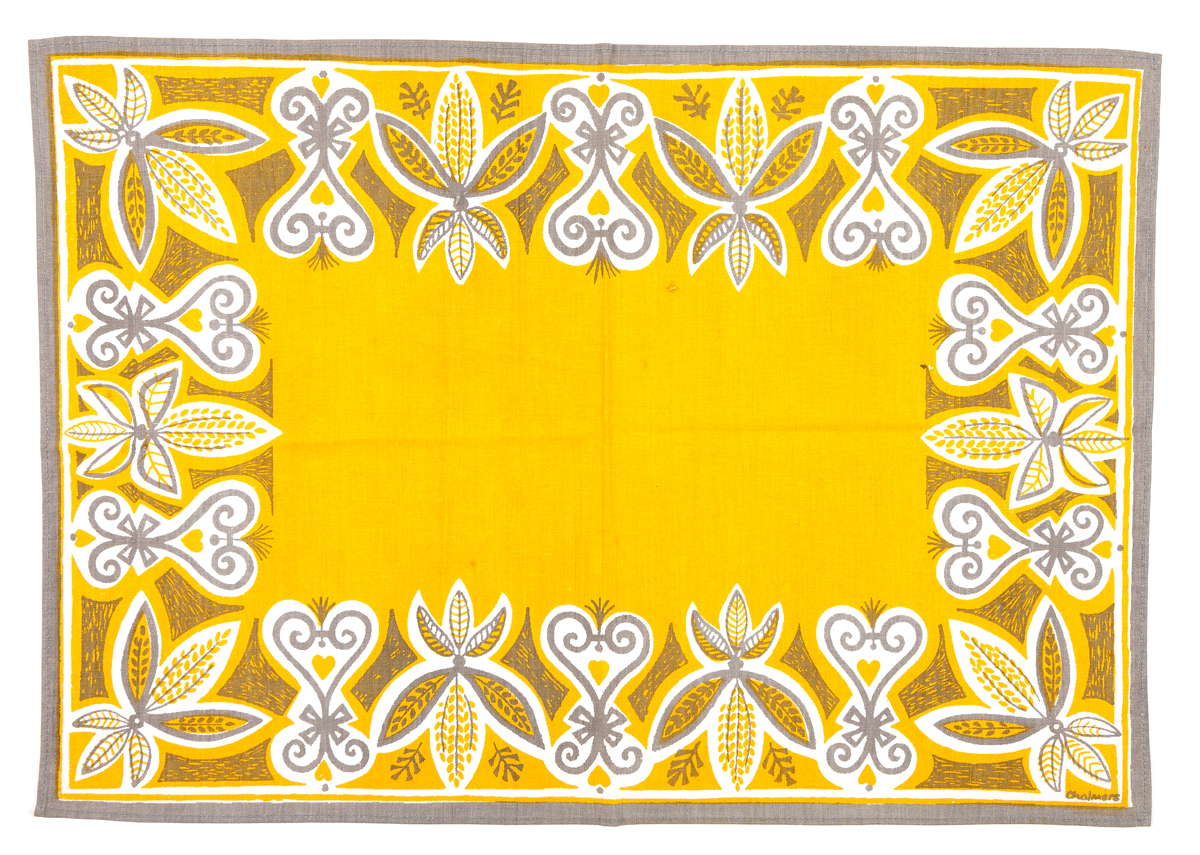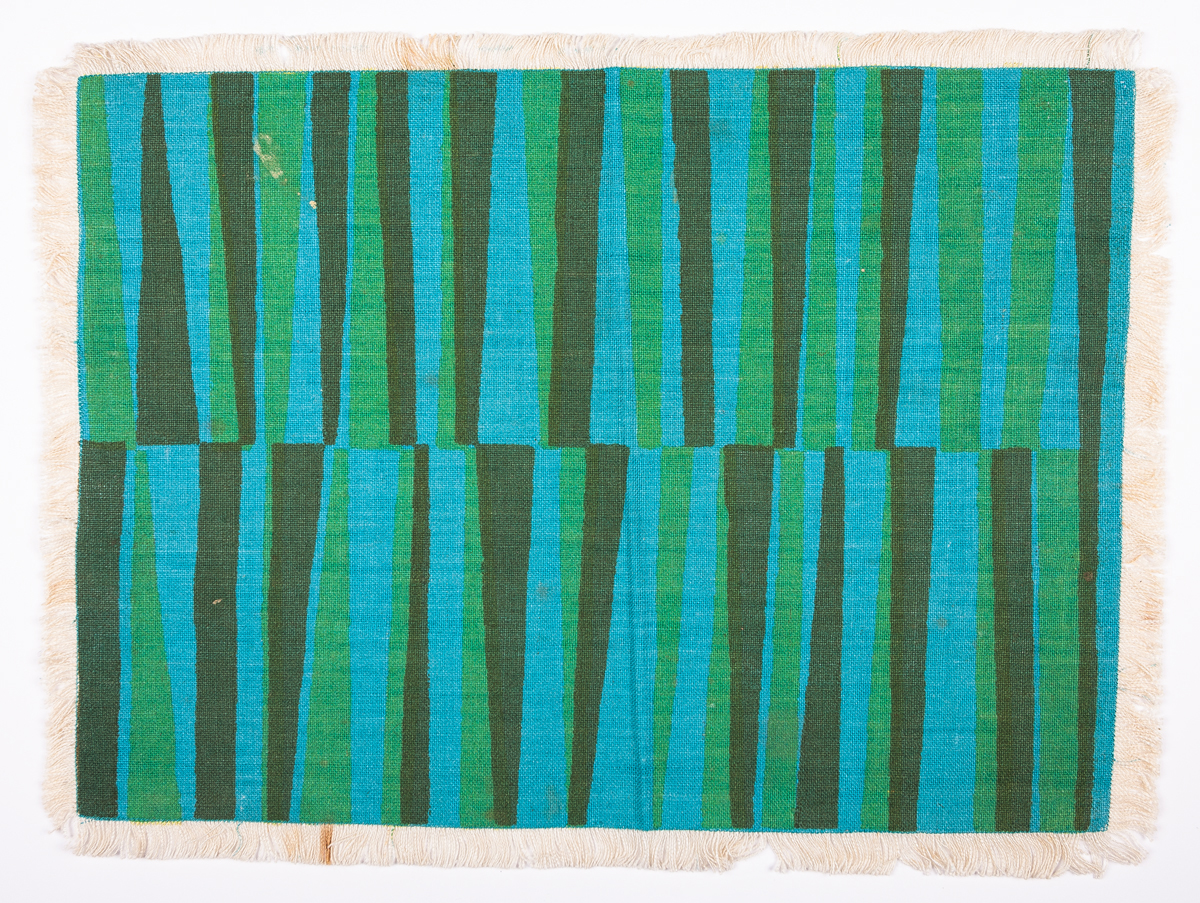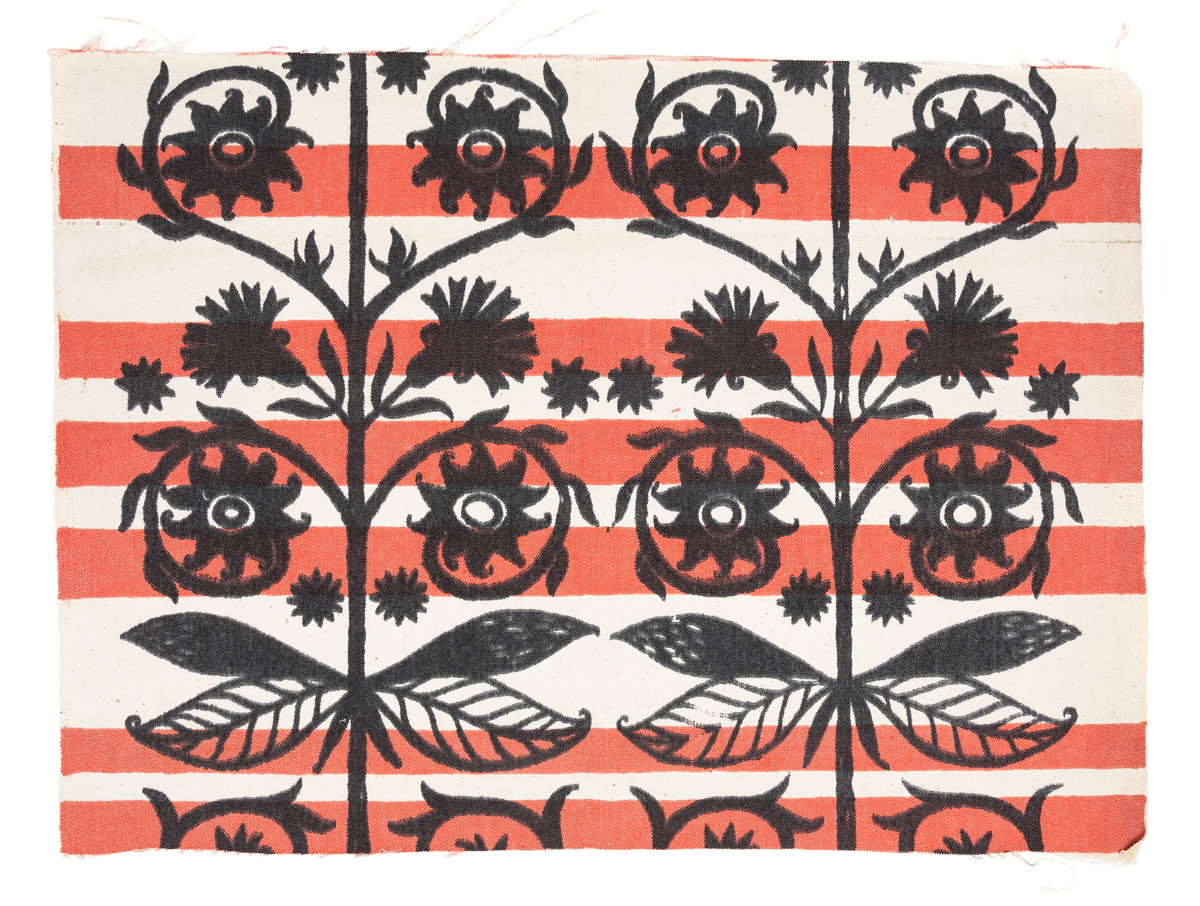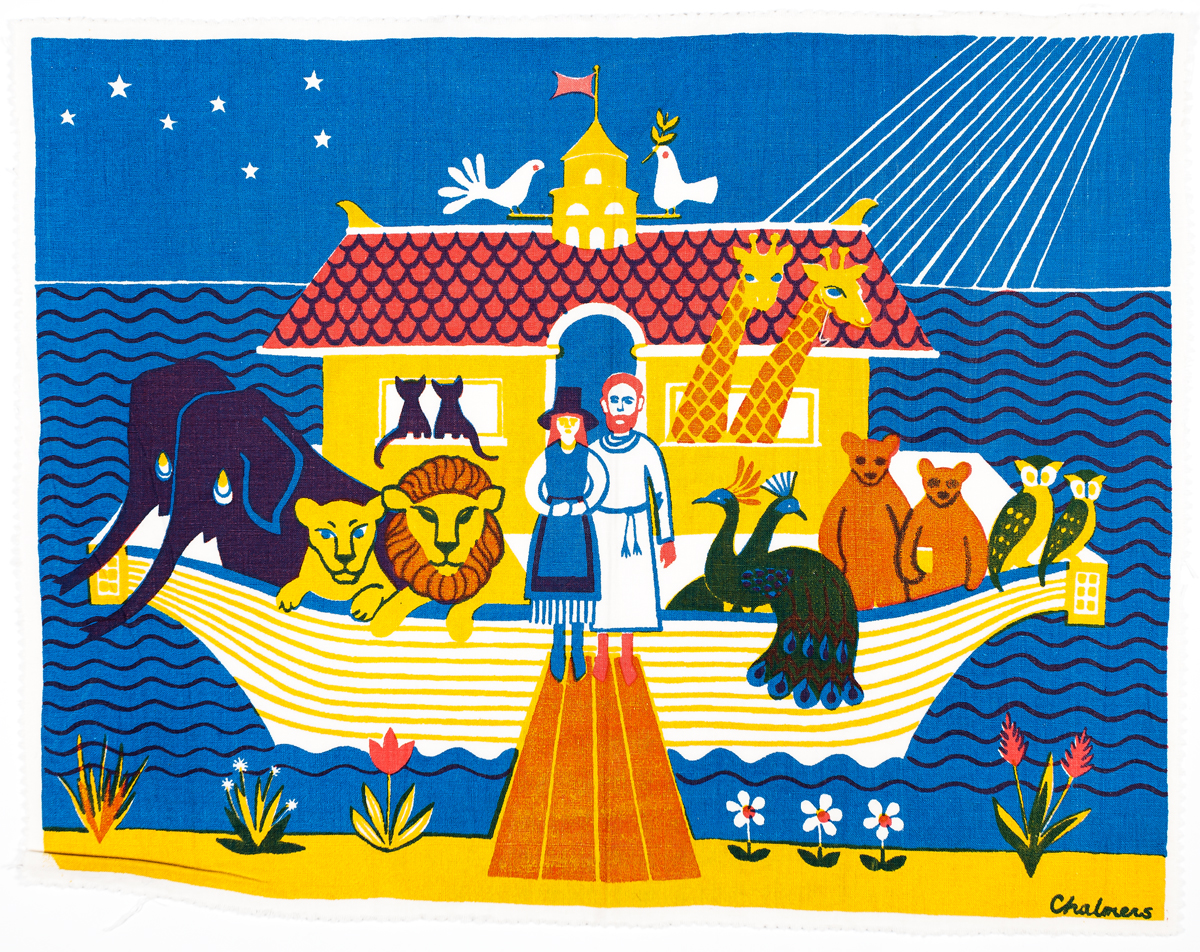Sylvia Chalmers
At the start of her career in the 1950s Chalmers worked in London producing textile designs for dress and interior furnishing for prestigious companies such as Heal’s or Elizabeth Eaton. She was elected to membership of the Society of Industrial Artists in 1958.
Examples of Chalmers’s high end commercial designs from this period are held in the V&A collection, for example ‘Palamos‘. However, in parallel, Chalmers founded her own textile enterprise, Tuar Fabrics, that she ran from her various domestic spaces in and around London from the 1950s before founding a larger studio-based enterprise at Thornhill, Dumfries, Scotland that ran successfully for forty years from the 1970s to the early 2000s.
Students at GSA in the immediate post-Second World War period benefitted from textile training that was recognised for progressive industry-oriented approaches, with emphasis on screen printing. This was a comparatively new means of mass industrial textile production; following the almost complete suspension of peacetime activity during the 1939-45 War, textile manufacturers were now investing in new screen printing machinery and shifting away from older factory equipment. During Chalmers’s time as a student, the teaching curriculum developed to include new technologies and methods as well as encouraging new career paths for women in textile design.
Chalmers’s chief inspiration while a student was the long-established textile genre of ‘florals’. However, her approach anticipated vernacular and historicist versions of British pop design because alongside observational drawing she deliberately quoted from printed resources such as historical textiles and needlework pattern books, botanical illustrations, and collections of folk art, exploring these sources in her student thesis.
Many of her designs for silk screen production mimicked the distinct marks of woodblock or copper engraving, or reworked folkloric motifs such as stylised birds and hearts. This reworking of traditional and popular visual culture was in accord with representations of Britain’s historical pageant associated with the Festival of Britain of 1951, and could be easily adapted to Tuar Fabrics’ main product lines of domestic textiles that were largely marketed through heritage outlets such as stately homes and other tourist sites—see for example the linen placemat ‘Invercauld 15th cent‘.

